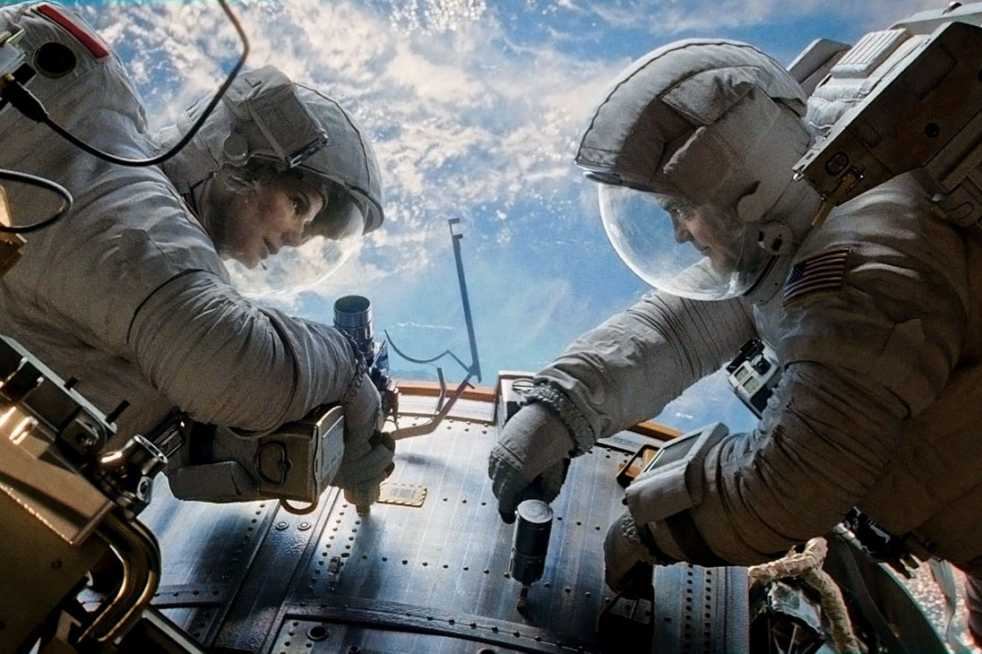As Oscar season approaches, there are going to be numerous films coming out soon that will be vying to win the coveted Best Picture award, and Gravity has set the bar high. One of the best films of this year so far, Gravity gives a terrifying yet beautiful look at the dangers of outer space and the will to survive.
Directed by Alfonso Cuaron (Children of Men), Gravity opens with Dr. Ryan Stone (Sandra Bullock, The Blind Side), a biomedical engineer on her first space mission, and seasoned astronaut Matt Kowalski (George Clooney, the Ocean’s series) working on the Hubble telescope. While talking to Mission Control, voiced appropriately by Ed Harris (Apollo 13), they learn debris from a shattered satellite is hurtling toward them. Before they can get back inside the shuttle, though, they are hit with the debris, which destroys the shuttle and strands them alone out in space.
The thing that stands out the most in this film is the cinematography, which juxtaposes breathtaking views of outer space with heart pounding sequences of the two characters just trying to stay alive. Like Cuaron’s previous films, Gravity uses many long takes; the opening shot of the film is 17 minutes long. During this shot, the camera moves freely through space, weaving around characters and giving the audience far-away and close up shots of the action. These long takes allow the audience to get sucked into the film and feel like they are floating out in space with the characters.
One of the best shots in the film is when Dr. Stone gets detached from her tether and floats away into the unending depths of space. The camera stays stationary as she gets further away, becoming increasingly smaller. Through this shot, the audience is able to connect with her and feel the same helplessness she does.
In addition to the film’s visual mastery, many different camera angles were used to connect the audience with the predicaments of the characters. During several shots, the camera is tilted sideways, disorienting the audience while simultaneously showing that in space, there is no up or down.
With almost every film coming out in 3-D now, it is hard to know which ones are worth the extra charge and which ones to see in regular 2-D. Gravity is definitely worth seeing in 3-D and may in fact be one of the best uses of 3-D in any recent film. The 3-D effectively adds to the experience, making you feel as if you were right there with the characters and causing you to throw your hands up in front of your face to protect yourself from the exploding satellite coming at you.
The primary reason for the excellent use of 3-D is the planning that went in to it. Instead of deciding to convert the film to 3-D in post- production, Cuaron planned to use 3-D from the very beginning stages of the film, and over the four and a half years it took to make the film, “about three and a half was for 3-D work.”
Both Clooney and Bullock give terrific performances. For most of the film, they are the only ones on screen, yet they are able to completely captivate the audience and carry the plot. Bullock gives her best performance since her Oscar-winning role in 2009’s The Blind Side, and it would not be surprising for her to at least get nominated, if not win, again.
With multiple movies coming out over the next few weeks, there will be plenty of options to choose from for a movie-going experience. Gravity is definitely one that should not be missed.
